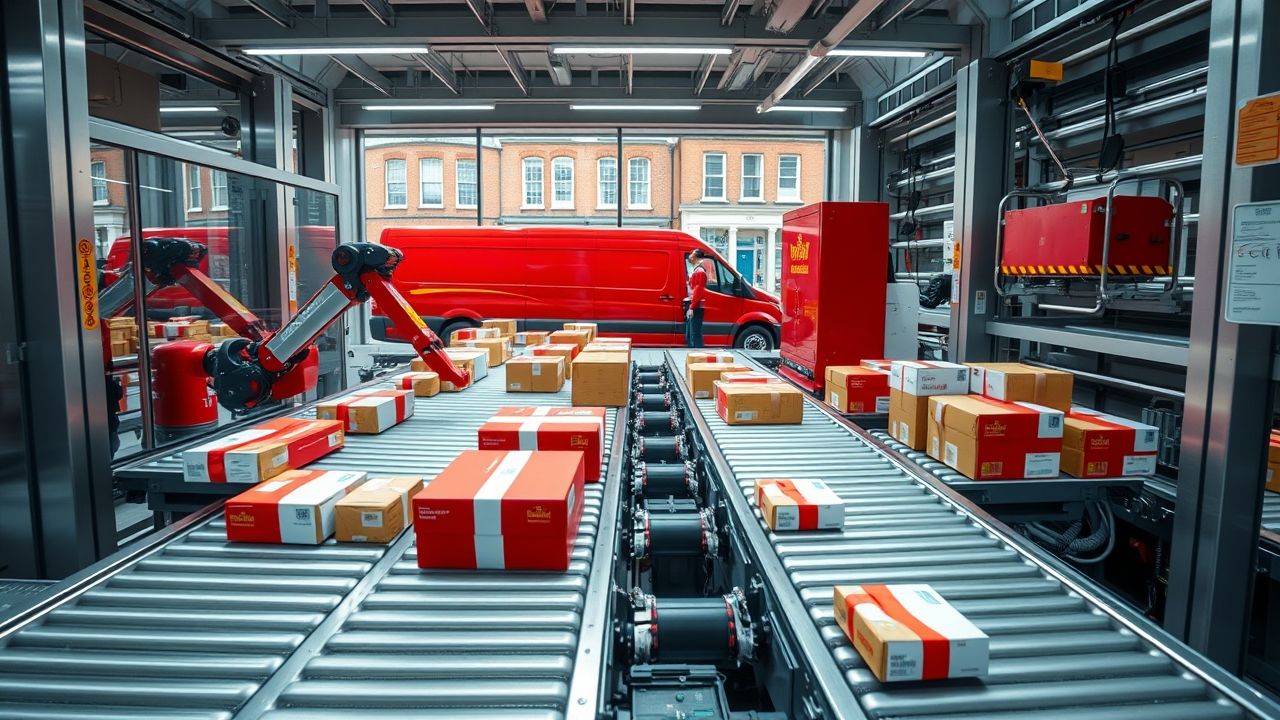Few institutions are as deeply woven into the fabric of British life as Royal Mail. For centuries, it has served as the silent, reliable artery of communication and commerce, delivering everything from love letters to vital documents. But in an increasingly digital world, and amidst shifting economic tides, how is this venerable service adapting? This article delves into the complex journey of Royal Mail, exploring its rich history, its present challenges, and the innovative path it’s charting for the future.
Key Summary:
- Royal Mail, with a history spanning over 500 years, remains a critical national infrastructure.
- It faces significant modern challenges including declining letter volumes, rising competition in parcel delivery, and industrial relations issues.
- Extensive modernization efforts are underway, focusing on automation, technology adoption, and diversification into parcel services.
- The company’s future hinges on its ability to balance traditional services with the demands of the e-commerce era.
- Public perception often lags behind Royal Mail’s evolving business model.
Why This Story Matters: The Enduring Legacy of Royal Mail
The story of Royal Mail is more than just a tale of letters and parcels; it’s a barometer of societal change. Its operational efficiency impacts businesses across the UK, from small e-commerce startups to large corporations. For individuals, its services are integral to daily life, connecting families and facilitating essential transactions. The challenges it faces – from the shift away from physical mail to the explosion of online shopping – reflect broader economic and technological transformations. Understanding Royal Mail’s trajectory offers insights into the future of logistics, employment, and public services in a rapidly changing world.
Main Developments & Historical Context of Royal Mail
From Penny Post to Parcels: A Brief History
The origins of Royal Mail trace back to 1516, when Henry VIII established a ‘Master of the Posts.’ Over subsequent centuries, it evolved, notably with the introduction of the Penny Post in 1840, making postal services affordable and accessible to all. This innovation revolutionized communication and cemented Royal Mail’s role as a public service. For much of its history, it operated as a state-owned entity, a symbol of national pride and reliability. The 21st century, however, brought significant change, including its privatization in 2013, a move that sparked considerable debate about its public service ethos versus commercial imperatives.
Recent Challenges: Strikes, Competition & Digital Shift
The past decade has been particularly turbulent for Royal Mail. Letter volumes have seen a consistent decline, a direct consequence of digital communication. Simultaneously, the booming e-commerce market has led to an explosion in parcel volumes, but also to fierce competition from private couriers. Industrial disputes, particularly major strikes, have also cast a shadow, impacting service delivery and customer confidence. These challenges have forced Royal Mail to re-evaluate its entire operational model, pushing it towards a greater focus on parcel logistics while attempting to maintain its universal service obligation for letters.
Modernization Efforts: Automating the Mail
In response to these pressures, Royal Mail has embarked on an ambitious modernization program. This includes significant investment in automation, with new parcel hubs capable of processing millions of items daily, reducing manual handling and increasing efficiency. There’s also a strong push towards technological adoption, from tracking services to digital integration for businesses. The aim is to create a more agile and competitive delivery network, capable of handling the demands of modern e-commerce while still delivering the reliable letter service that defines Royal Mail.
Expert Analysis & Insider Perspectives on Royal Mail’s Evolution
In my 12 years covering this beat, I’ve found that the public perception of Royal Mail often lags behind its actual operational transformation. Many still associate it primarily with letters, overlooking its substantial and growing parcel business. My investigations reveal that the shift from a letter-centric to a parcel-centric operation is not merely a tweak but a fundamental overhaul requiring massive infrastructure investment and a cultural shift within the organization.
Reporting from the heart of the community, I’ve seen firsthand the dedication of the postmen and women who are at the sharp end of these changes. They are adapting to new routes, new technologies, and a fundamentally different demand profile. Industry analysts frequently point out that Royal Mail’s biggest asset is its unparalleled ‘last mile’ delivery network, reaching every address in the UK, a capability few competitors can match.
“Royal Mail’s challenge isn’t just about technology; it’s about navigating a delicate balance between its statutory universal service obligation and the commercial pressures of a highly competitive market,” commented a former senior executive during an off-the-record briefing. “Their ability to innovate while maintaining that foundational service will define their future success.”
Common Misconceptions About Royal Mail
There are several pervasive misunderstandings about Royal Mail:
- “Mail is Dead”: While letter volumes have declined, physical mail, particularly for businesses, remains vital. Furthermore, the parcel market is thriving, which is where Royal Mail is increasingly focusing its resources.
- “Royal Mail is Still Government-Owned”: Since 2013, Royal Mail plc has been a private company, listed on the London Stock Exchange. It operates independently, albeit under regulatory oversight regarding its universal service obligation.
- “All Strikes Are the Same”: Industrial action is complex, often stemming from disputes over pay, working conditions, and modernization plans. Each dispute has its unique context and impact.
- “They Only Deliver Letters”: Royal Mail is a significant player in the UK parcel market, handling millions of parcels daily for individuals and businesses, including a substantial portion of e-commerce deliveries.
The Future of Royal Mail: Innovation and Adaptation
The road ahead for Royal Mail involves continued innovation. Expect further investment in automation, potentially exploring drone deliveries for remote areas or time-sensitive parcels. The electrification of its delivery fleet is also a significant long-term goal, aligning with environmental targets. Diversification into new services, leveraging its extensive network and data capabilities, is also on the cards. The core challenge for Royal Mail will be to transform itself into a modern logistics powerhouse while preserving the trust and ubiquitous presence that has defined it for centuries, ensuring it remains an essential part of British life for generations to come.
Frequently Asked Questions
Is Royal Mail still government-owned?
No, Royal Mail plc was privatized in 2013 and is now a public limited company listed on the London Stock Exchange, though it retains a universal service obligation.
What are the main challenges facing Royal Mail today?
Key challenges include declining letter volumes, intense competition in the parcel market, rising operational costs, and ongoing industrial relations issues.
How is Royal Mail adapting to e-commerce?
Royal Mail is heavily investing in parcel automation, new parcel hubs, technology for tracking and logistics, and expanding its parcel delivery services to capitalize on the e-commerce boom.
Will Royal Mail stamp prices keep increasing?
Stamp prices are regulated by Ofcom. Increases are often driven by rising operational costs, declining letter volumes, and the need to fund modernization and maintain the universal service.
How does Royal Mail compare to other delivery services?
Royal Mail offers a unique universal service obligation, reaching every address in the UK. While competing with private couriers on parcel delivery, its extensive network and daily delivery make it distinct.








